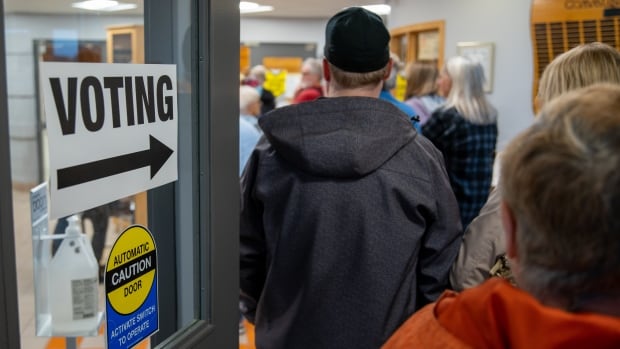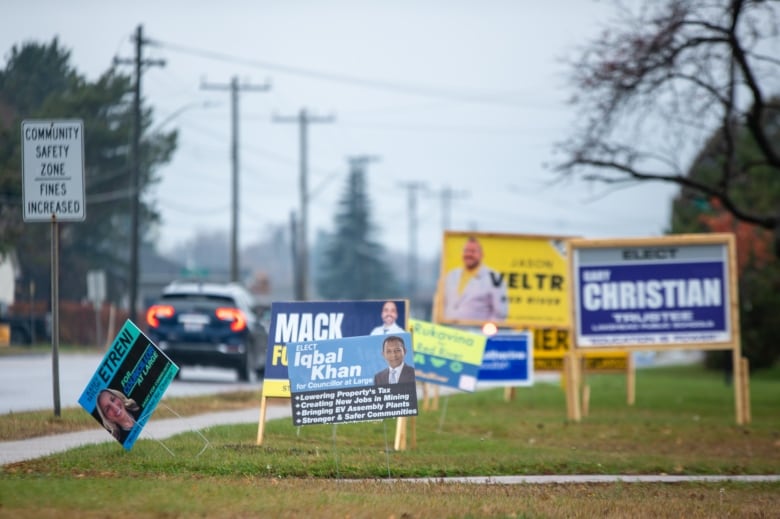
The 2022 municipal election voting is over, but there’s still number crunching going on. And for officials in many parts of northwestern Ontario, the news is promising.
Compared to the last municipal election, voter turnout in the region was on the upswing as Ontario chose their municipal representatives, including mayors, councillors and school trustees, while the provincial average rate dipped over 2018.
The Association of Municipalities of Ontario is reporting a 34 per cent voter turnout across the province, down from 38 per cent four years ago.
Concerns have surfaced once again over voter turnout, with some experts calling the numbers from the most recent election cycle abysmal and very worrying.
But it’s a different story in many northwestern Ontario municipalities.
In the small town of Atikokan, about 200 kilometres west of Thunder Bay, about 56 per cent of the community turned out to vote, and it’s one of the highest turnout rates in the province.
“I’m so happy. My goal was 60 per cent and I even knew that was a little crazy, so the fact that we got so close to 60 is just incredible. I was so happy,” said Leah Fraser, deputy clerk with the Township of Atikokan.
Fraser’s counterpart, clerk Sue Bates, was the first to point out that Fraser was responsible for switching things up for this municipal election.
The deputy clerk pushed to make a switch to online voting and ran a social media campaign to get community members to the polls.
“One reason I pushed for it is I feel like there’s been a change in demographics in town lately and a lot of younger people who’ve moved back … I’m 26 and a lot of my friends live here now,” said Fraser.
“Historically we’ve had a higher population among seniors, but there’s been a lot of young families moving to town, so I thought that to increase voter turnout, making the election more accessible to young people would really help.”
Big changes in the northwest may have help turnout
This is the first year Atikokan switched to online and telephone voting only, but the township did have kiosks set up to help people cast their ballots if needed. That’s something equity advocates pushed for as many northwestern communities move away from in-person voting.
The mayor-elect in Atikokan said the amount of imminent change may have driven people to the polls this year as well.
The town’s former mayor announced he would not be running again, capping off a nearly 40-year political career, serving as mayor and as councillor.
“It’s an opportunity really with new councillors and a new mayor to maybe look at things a little, or we will be looking at things a little differently, and taking maybe a little bit of a new direction,” said Rob Ferguson, who was elected mayor on Monday after serving as a councillor for eight years.

An election representing big changes in northwestern Ontario’s second largest municipality also seemed to draw people to the polls.
In Kenora, 53 per cent of the population voted, electing Andrew Poirier as mayor. In 2018, the turnout was around 49 per cent.
The municipality is also one of many in the region where the incumbent mayor did not run.
“And the other thing was, it was the number of younger candidates that we had running. So I think that inspired a lot of younger voters that maybe haven’t been engaged in the past to come out and vote,” said Poirier, who also pointed to the switch to online and phone voting as a positive.
Poirier said while the 53 per cent turnout rate seems positive, he believes that number is still quite low.
“I know it’s higher than it was from [2018] and … I’d still like to see that much higher, into the mid-60s to 70 per cent range. I feel more comfortable there,” he said.
Marathon is another community that changed its available voting methods, offering only internet voting in 2022.
The town’s clerk said the change was made in a bid to boost voter turnout in the North Shore community.
The move seemed to work, even with no mayoral choices on the ballot, as longtime Mayor Rick Dumas was once again acclaimed.
Voter turnout in Marathon increased from 33 per cent in 2018 to 46 per cent in this election.
“Four years is a long way away, but I’m confident that using the electronic platform is the way to go looking forward to continue to increase voter turnout as well as provide a secure solution to increase overall accessibility to the vote,” said Louise Lees, deputy clerk in the Town of Marathon.
Despite some strong turnout, low participation a concern
Municipalities like Fort Frances, Ear Falls, Red Lake, and Nipigon all had stronger voter turnouts as well, surpassing the provincial average by about 10 and even 20 per cent in some cases.
Despite the higher-than0average turnout in many areas, Thunder Bay saw a significant drop this year.
In 2018, the city led the province with its voter turnout after it opted to offer three different methods of voting. But this year, it dropped nearly 10 points to just 42 per cent, even with added voting methods.
That’s a concern for Lakehead University student Simran Talpade, who noticed a lack of engagement among her own friends during this election.
“Perhaps young people don’t really feel like they have a candidate to completely connect to, and because of that, they don’t have an incentive to vote because it’s like, well, if I don’t have a candidate representing my viewpoints, why should I give them my vote? And then it leads to not voting,” said the second-year political science student.
Even with northwestern Ontario bucking the low voter turnout trend, experts are concerned for Ontario as a whole, calling the lack of engagement a troublesome trend.
Leah Levac, an associate professor of political science at the University of Guelph, said it’s important for people of different ages and backgrounds to vote because they help choose candidates who reflect their own experiences and interests.
“If voting rates continue to decrease, then I think the focus or the priorities of whoever is the consistent voting public becomes narrower and narrower, which is a problem for democracy, but it’s also a problem for the smooth functioning of a diverse society,” Levac said in an interview with CBC Kitchener-Waterloo.